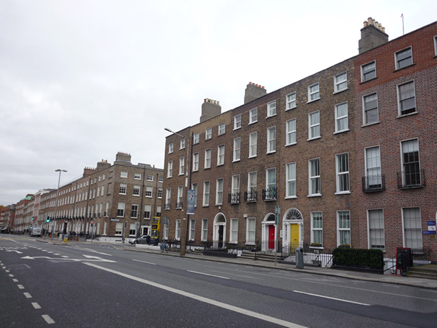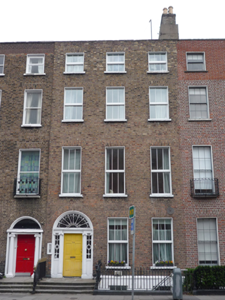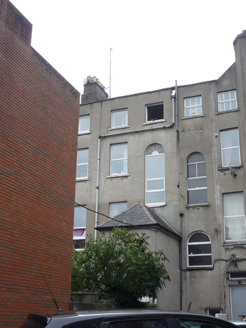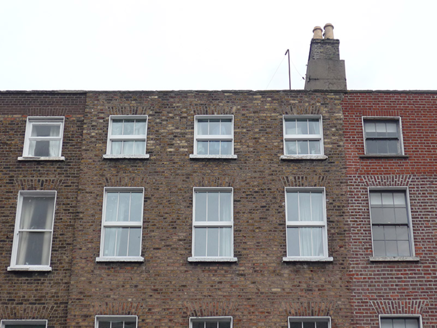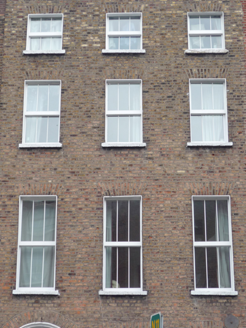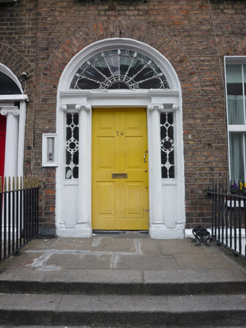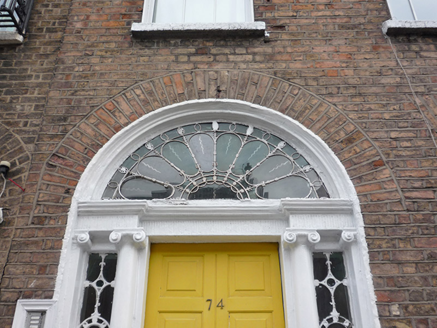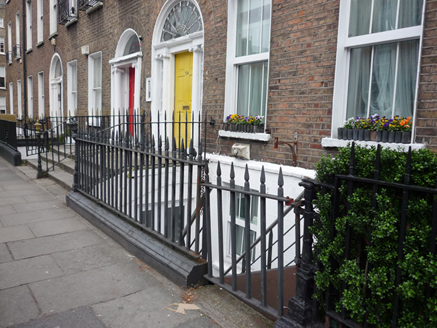Survey Data
Reg No
50930248
Rating
Regional
Categories of Special Interest
Architectural, Artistic
Original Use
House
In Use As
Apartment/flat (converted)
Date
1790 - 1810
Coordinates
316315, 232945
Date Recorded
20/10/2015
Date Updated
--/--/--
Description
Terraced three-bay four-storey over basement former townhouse, built c. 1800, with two-storey return to rear (north) elevation. Now in use as apartments. M-profile roof, hipped to west end, concealed by brick parapet with masonry coping, shouldered brown brick and rendered chimneystack to east party wall with lipped yellow clay pots. Parapet gutters with uPVC rainwater goods to rear (north). Brown-brick walling laid in Flemish bond, ruled-and-lined rendered basement walls beneath granite plinth course. Rendered walls to rear (north). Square-headed window openings with brick voussoirs, patent reveals and masonry sills. Plain rendered surrounds to rear (north) with round-headed opening to second floor. Replacement uPVC windows throughout; sliding sashes to principal (south) elevation and casements to rear. Round-headed door opening to principal elevation (south) with brick voussoirs, moulded reveals and engaged Ionic columns with respond pilasters flanking decorative iron sidelights, rising to stepped cornice over fluted frieze with ornate iron fanlight and replacement timber panelled door. Sandstone entrance platform with cast-iron boot scraper, approached by three granite steps, flanked by iron railings with decorative cast-iron corner posts. Similar railings over granite plinth enclosing basement area. Mild-steel steps to basement with square-headed replacement door beneath entrance platform. Street fronted on north-side of Leeson Street Lower, with enclosed small yard to rear.
Appraisal
Despite the loss of some historic fabric, this typical Georgian townhouse retains a good doorcase and decorative fanlight, and forms part of a relatively intact terraced row. Leeson Street Lower is characterised by well-proportioned late-Georgian brick terraces which display restrained detailing and classically-styled doorcases. The main route from St. Stephen’s Green to Donnybrook, Leeson Street remained largely undeveloped until the late-eighteenth century and was almost entirely complete by 1836.
